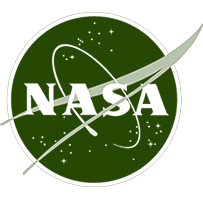WISE launched into the morning skies above Vandenberg Air Force Base in central California on Dec. 14, 2009. By early 2011, it had finished scanning the entire sky twice in infrared light, snapping pictures of three-quarters of a billion objects, including remote galaxies, stars and asteroids. Today, astronomers continue to mine a cosmic quarry of data provided by WISE.
Upon completing its surveys in 2011, WISE was put to sleep. But in Sept. 2013, NASA reactivated the mission with the primary goal of scanning for near-Earth objects, or NEOs. Though the WISE mission had been doing asteroid searches before it entered hibernation, through a project called NEOWISE, that had not been its main purpose until now. For its new chapter in life, the mission is officially renamed NEOWISE.
WISE
WISE began its mission as a NASA-funded Explorer mission to provide a vast storehouse of knowledge about the solar system, the Milky Way, and the Universe. Among the objects WISE studied are asteroids, the coolest and dimmest stars, and the most luminous galaxies.
WISE is an unmanned satellite carrying an infrared-sensitive telescope that imaged the entire sky. Since all objects emit infrared radiation, the WISE telescope and detectors were kept very cold (below -430° F /15 Kelvins, which is only 15° Centigrade above absolute zero) by a cryostat -- like an ice chest but filled with solid hydrogen instead of ice.
Solar panels provided WISE with the electricity it needed to operate, and always point toward the Sun. Orbiting several hundred miles above the dividing line between night and day on Earth, the telescope looked out at right angles to the Sun and always pointed away from Earth. As WISE orbits from the North pole to the equator to the South pole and then back up to the North pole, the telescope swept out a circle in the sky. As the Earth moves around the Sun, this circle moved around the sky, and after six months WISE wobserved the whole sky.
As WISE sweeps along the circle, a small mirror scanned in the opposite direction, capturing an image of the sky onto an infrared sensitive digital camera, taking a picture every 11 seconds. Each picture covers an area of the sky 3 times larger than the full Moon.
After 6 months WISE obtains nearly 1,500,000 pictures covering the entire sky. Each picture has one megapixel at each of four different wavelengths that range from 5 to 35 times longer than the longest waves the human eye can see. Data taken by WISE was downloaded by radio transmission 4 times per day to computers on the ground and combined the many images taken by WISE into an atlas covering the entire celestial sphere and a list of all the detected objects.
NEOWISE
The NEOWISE project is the asteroid-hunting portion of the Wide-field Infrared Survey Explorer (WISE) mission. Funded by NASA's Planetary Science Division, NEOWISE harvests measurements of asteroids and comets from the WISE images and provides a rich archive for searching WISE data for solar system objects.
WISE was launched in December 2009, and surveyed the full sky in four infrared wavelength bands (3.4, 4.6, 12 and 22 μm) until the frozen hydrogen cooling the telescope was depleted in September 2010. The survey continued as NEOWISE for an additional four months using the two shortest wavelength detectors. The spacecraft was placed into hibernation in February 2011, after completing its search of the inner solar system.
During its primary mission, NEOWISE delivered infrared detections of more than 158,000 minor planets to the scientific community, including more than 34,000 new discoveries. NEOWISE data have been used to set limits on the numbers, orbits, sizes, and probable compositions of asteroids throughout our solar system, and enabled the discovery of the first known Earth Trojan asteroid.
NEOWISE Reactivation
In 2013, NEOWISE was brought out of hibernation to learn more about the population of near-Earth objects and comets that could pose an impact hazard to the Earth. During its multiyear survey in the 3.4 and 4.6 um infrared bands, NEOWISE will rapidly characterize near-Earth objects (NEOs) and obtain accurate measurements of their diameters and albedos (how much light an object reflects). NEOWISE is equally sensitive to both light-colored asteroids and the optically dark objects that are difficult for ground-based observers to discover and characterize.
NEOWISE observations resumed in December 2013. Just six days after the survey start, NEOWISE discovered its first potentially hazardous near-Earth asteroid, 2013 YP139.
The characteristics of and initial performance of the NEOWISE Reactivation mission are described in Mainzer et al. 2014, ApJ, 792, 30.
The Single-exposure image and extracted source information from the first four years of NEOWISE observations were released on: March 26, 2015, March 23, 2016, June 1, 2017 and April 19, 2018respectively. Diameters and albedos for asteroids detected by NEOWISE during the first three years have been published by Nugent et al. 2015, Nugent et al. 2016 and Masiero et al. 2017.
Current Status
NEOWISE survey operations have been extended through December of 2018.
As of mid-July 2018, NEOWISE is 25% through its tenth coverage of the sky since the start of the Reactivation mission. Over 689,000 infrared measurements have been made of 33,328 different solar system objects, including 875 NEOs and 148 comets.
The NEOWISE project has completed reprocessing all primary mission data to extend the search for asteroids and comets to fainter limits, and to take advantage of the improved photometric and astrometric calibrations available. These detections have been submitted to the Minor Planet Center and await ingesting. The Project has also delivered a catalog of physical properties for known minor planets to NASA's Planetary Data System, which will be updated at the end of the mission to include recent data from the NEOWISE Reactivation Survey and properties of objects measured in stacked observations.




